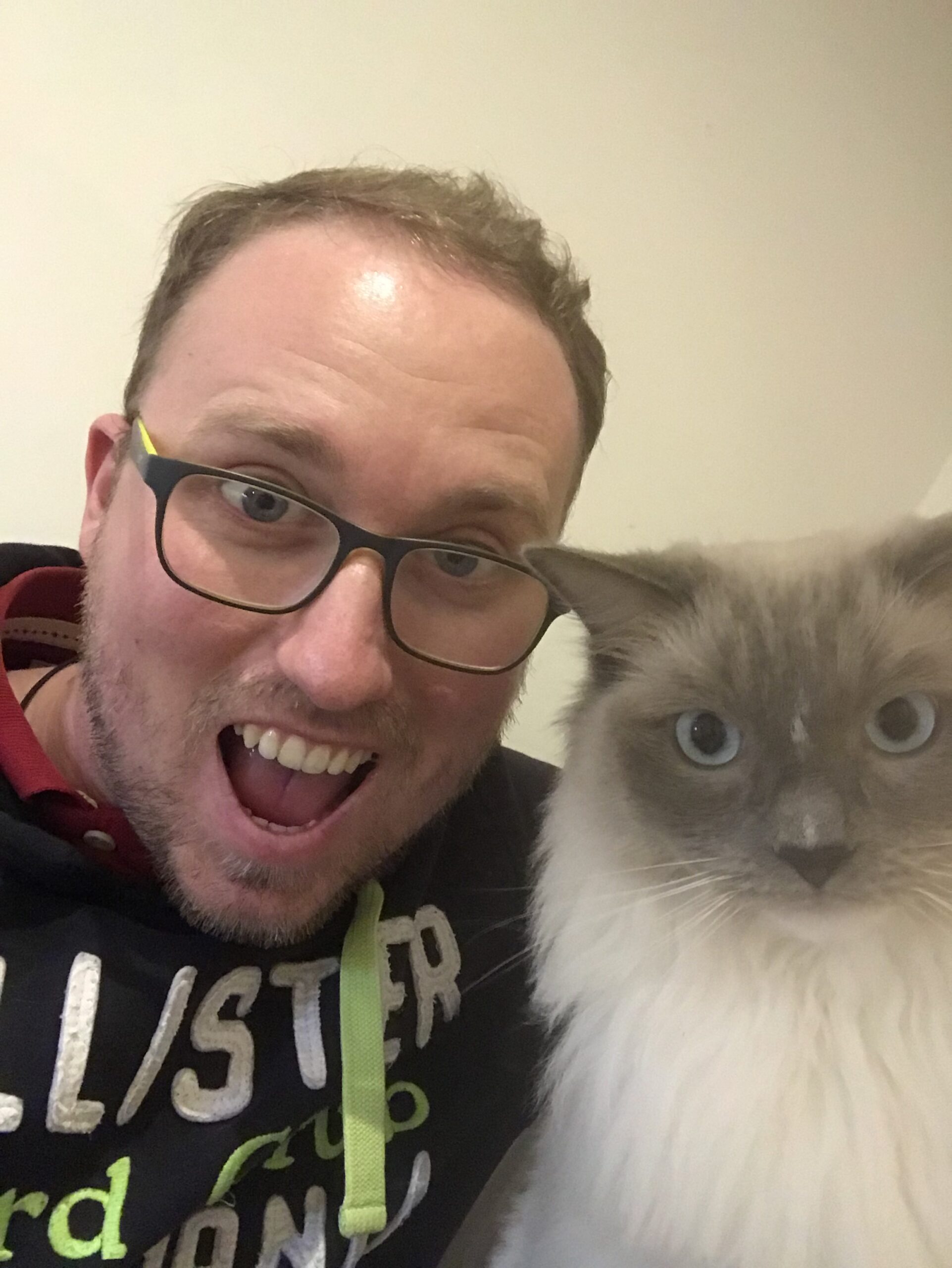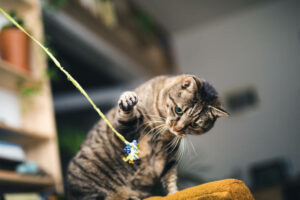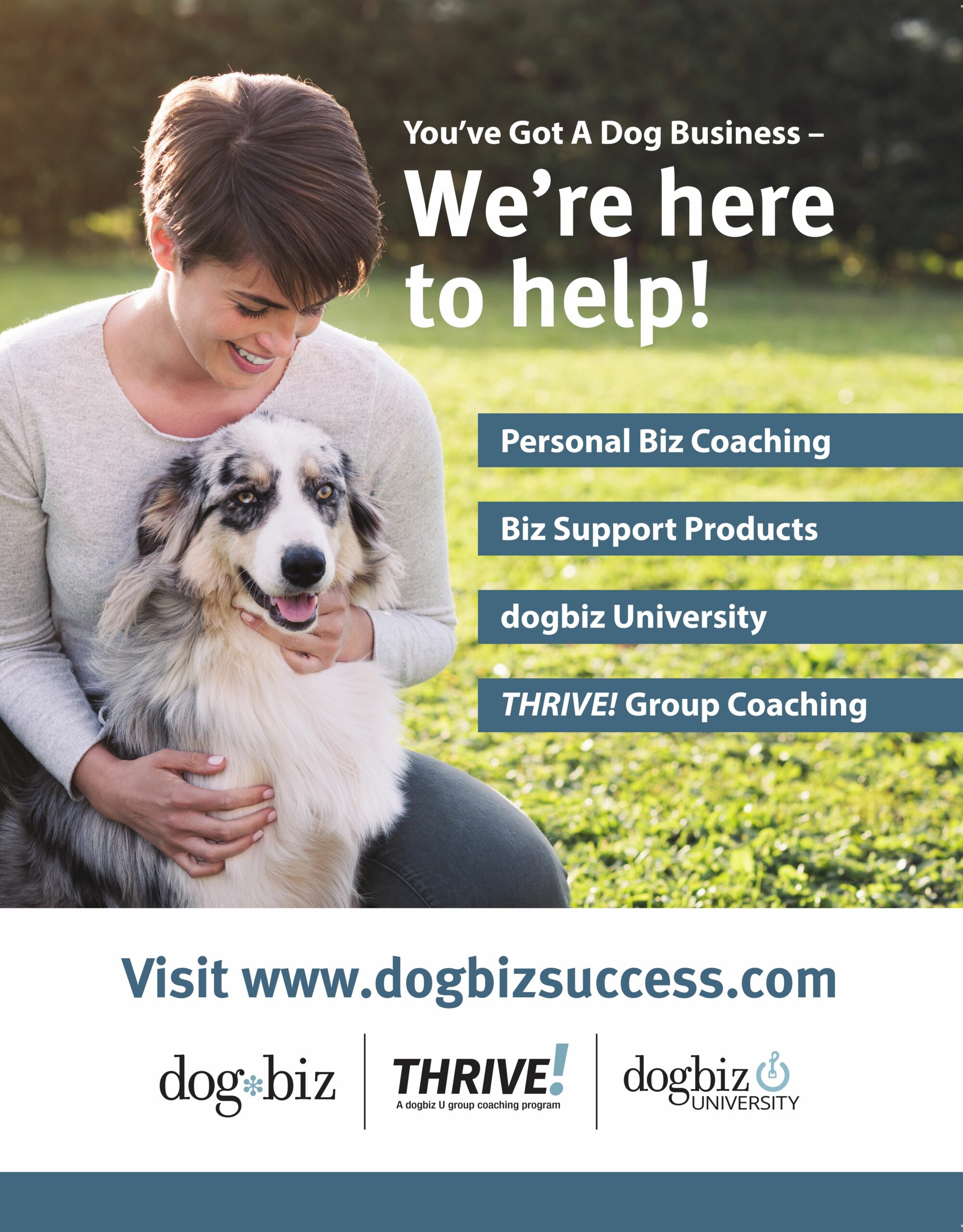Barks Blog
Tabby’s Transformation at the Shelter
by Tom Candy
Tabby was a 3-year-old spayed female domestic shorthair cat who came to the shelter following a period of straying. Nothing else was known about her history.
At the shelter, she was kept in an individual cat pen that measured 5 feet by 30 inches and was 30 inches high with a cover over the top. A raised bed was inside the pen, and food and water were located near the bed area. A litter tray was located on the far side of the cattery with a screen on the bars.
Over the first few days, Tabby would come out when staff entered the cattery to clean, but she showed aggressive behaviors such as batting and scratching toward shelter staff members’ hands. She also exhibited other signs of stress: hiding away when handlers approached, licking of paws when handlers were in the cat area, and airplane ears (holding the ears off to the side).
We developed three main goals for Tabby while she was at the shelter:
Goal 1: Make Handling Predictable
To increase choice and predictability for handling, touch was only offered if Tabby sat on a specific mat that was left in the cattery. Initially, tactile contact was kept to short sessions, rewarding with high-value food in between. It is important to remember to use individual treats and reward the cat in between sessions, and not try and touch the cat while they are eating, or lure or distract the cat using food. This can put the cat into a conflicting emotional state or reduce the reward power of the food you are using.
Goal 2: Increase Enrichment
To increase enrichment, shelter staff provided catnip- and Feliway-scented interactive toys and food-based enrichment for Tabby to begin some self-directed play. The food-based enrichment consisted of food being placed in carboard toilet paper tubes as well as a Kong Wobbler and cardboard reach feeder. Alongside this, to build positive associations with staff entering the pen, we introduced three to four daily structured play sessions using fishing rod–type toys.
Goal 3: Reduce General Stress
To help reduce Tabby’s general stress levels we added additional hidey holes and height options so that she had increased options to avoid people, if wanted, and implemented a Feliway diffuser into the pen. We also did some positive-association scent transfer with the regular block staff in which hand towels they had used were left in one area of the pen with treats. It’s important to provide this as an option for the cat to engage with and not force it onto the cat by placing it in their bed or other areas where they spend most of their time. It is also important that their only source of food not be used, as this could lead to them not eating if they are concerned by the smell of the towel.
After a few days, the amount of time Tabby asked for fuss increased and she was eager to engage in toy play when staff entered. The number of incidents related to handling reduced significantly, and other signs of stress decreased.
When Tabby was adopted, we sent the mat that had been used for predictable handling home with her and showed the owners how to engage in the fishing rod play. After a few weeks, they were able to stop using the handling mat as Tabby was engaging in social facilitation much more readily.
* * *

Tom is a certified clinical animal behaviorist with the Animal Behaviour and Training Council in the United Kingdom, and a certified canine behavior consultant and certified shelter behavior specialist with the International Association of Animal Behavior Consultants. Tom is also a behavior and welfare trustee for Hope Rescue Wales and runs a Facebook page and podcast called Simplifying Shelter Behaviour that offers free tools and tips for those working in shelters. He speaks on shelter behavior topics in webinars, podcasts, workshops, and conferences both in the United Kingdom and internationally.


